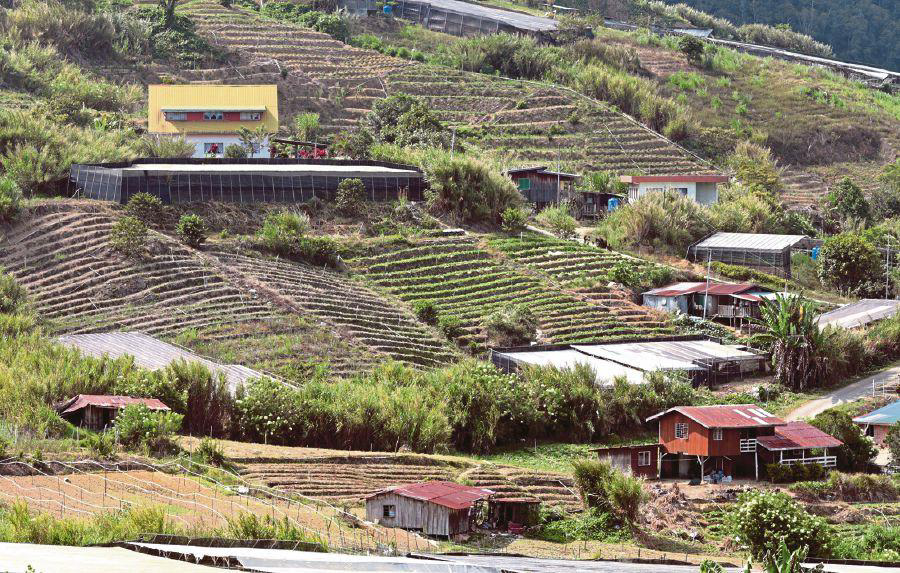THE agriculture sector needs to increase food production by 70 per cent in order to adequately “feed” the global population in 2050. This estimate was made by the Food and Agriculture Organisation (FAO) in its report on How to Feed the World in 2050.
Although there is still ample land resources available for crop production, much of the available lands are actually forest and conservation areas. Rather than embarking in land clearing, a better option is to increase food production via modern technology for farmers to grow foods in a sustainable manner.
Moisture sensors on the field and livestock biometrics are providing new opportunities for farmers to maximise yields and minimise time. As for large-scale operations, automation technology will help agriculture via agricultural robots to automate agricultural processes.
With countless modern technologies available in the market, choosing the right technology and innovation to make agricultural transformation a reality could be a daunting task.Especially if the necessary conditions to adopt modern technology are not readily available.
Hence the government needs to build up human capital capacity to ensure availability of a skilled labour force to operate the new technologies. It will also need to invest in modernising existing infrastructure, including electricity, Internet connectivity, irrigation and roads.
It can be argued that the agricultural sector has been undervalued in the overall growth strategy towards achieving high-income status. Instead, the focus on economic growth has centred on developing the manufacturing industry. Until recently, there was not a lot of attention given to understand the critical role the agriculture sector could play in transforming economies and meeting other essential development goals, such as farmer empowerment, poverty eradication, reducing malnutrition and bridging the income gap.
The recent announcement of the drafting of Agrofood Policy 2.0 by the prime minister is a positive step towards the recognition of the importance of the agricultural sector.
Although no details were outlined yet, policymakers need to consider three readiness factors to chart a suitable direction for agricultural development.
Otherwise, Malaysia will continue to struggle with its agricultural transformation.
First, the seed industry must be developed to enhance the capability of research institutes to produce good-quality seeds at a competitive price.
Without a consistent supply of good-quality seeds, production would be greatly affected, exposing farmers and consumers to price volatility.
Improvement of “plant breeding” capacity should be considered as one of the tasks of research labs to diversify seed varieties, focusing more on commercialising indigenous plant, which could create a new market.
At the moment, the production of vegetable seeds is merely 10 per cent of domestic market needs.
Second, it is imperative to connect rural agriculture with the application of information and communication technology to operate within small, scattered and unproductive farmlands.
With the help of precision agriculture innovations, such as real-time data and information on disease outbreaks, farmers may experience less weather uncertainty and mitigate the risk of production loss. The government also needs to provide a platform to engage the farmers and service providers with cutting-edge agriculture technology.
The introduction of mobile applications in collecting and analysing information with regard to crop and animal health is becoming feasible in Malaysia as farmers, especially the youth, are now more technology-savvy.
According to the Agriculture and Agro-based Industry Ministry, youths comprise 30 per cent of the agricultural workforce and are increasingly interested in learning more about modern farming.
Third, we need to utilise new farming techniques to meet consumers’ demand for safe and nutritious food. As the population becomes highly educated, awareness of the danger of harmful chemicals in foods also increases among consumers. Alternatives to the traditional approach of growing food, such as vertical farming, hydroponic or seawater farming, will enable farmers to grow healthier and higher quality produce such as organic and premium food products.
However, growing crops in such challenging environments with minimum use of water, fertiliser and pesticide requires affordable energy to ensure its success in transforming the agricultural sector.
Ideally, MOA as the leading agency should drive the agricultural transformation in partnership with other agencies to work towards low energy costs by offering a subsidised rate or tax incentives.
Moving forward, a concerted effort is required of the government and investors, as well as willingness among farmers to change to new farming methods.
Achieving the vision of a transformed Malaysian agriculture in the age of the Fourth Industrial Revolution will no longer depend on hard labour.
Rather, farms and agricultural operations will use sophisticated technologies that allow farms to be more profitable, resource efficient, safe and environmentally responsible.





